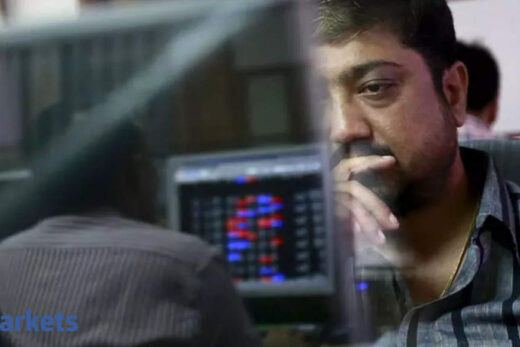While you continue to like the Kotaks and the of the world, are you looking at expanding the number of stocks in your portfolio?
Two things are playing out. One, flows into Marcellus have been very strong over the last 12 months. As the money that we are managing is basically moving towards the billion dollar mark, we are adding a few more stocks because there is only so much you can buy in a name and many of the names that we own we are already accounting for a substantial part of the free float and that is a little uncomfortable once you start accounting for a significant part of the free float.
The second reason for adding new stocks was that a couple of years ago, we launched the small cap portfolio Little Champs where many of these petchem names and the auto ancillary names that I was just highlighting are. We discovered those names. The specialty chemical names like Alkyl Amines, the auto ancillary names such as Lumax we have discovered in the Little Champs portfolio. We shut that to inflows in July last year and opened a third strategy which is Kings of Capital. This follows a lending-focussed asset management insurance focussed strategy.
We are trying to figure out what will do well over the next two, three, four years and launching a specific portfolio dedicated to that. On August 19, we launched Little Champs, the smallcap portfolio. On July 20, we launched Kings of Capital and that is how the expansion has come. Aavas Financiers goes into Little Champs and Kings of Capital and we did this very consciously. We realised that the economic cycle was bottoming out. In a way, Covid made it very easy to figure out that the economic cycle was bottoming out and we therefore added smallcaps and financials as a way to play the reflation in the economic cycle.
The consistent compounders — the traditional Marcellus flagship strategy — continues with Kotak and HDFC Bank and Asian and Berger, the traditional favourites. So you might want to see it as a core and satellite strategy. The core names remain the traditional Marcellus names, HDFC Bank,
, Asian Paints, Berger Paints and in the satellite names Little Champs and the Kings of Capital names what we have discussed over the last 10 minutes.
Do you think some of the classic compounders can get into time-wise correction because there is a limited scope for Asian Paints PE multiples to expand even if growth is strong? HUL was a great company but between 1995 and 2000 it did not give any great returns. Could it happen to Asian Paints and the other classic compounders?
This is a subject that one can look at very carefully. There is plenty of data on this. What India’s history suggests is that in the raging bull market of 2004 to 2009, before the Lehman correction set in, the Sensex compounded around 30%. In those four years, the Sensex and the Nifty consistently gunned out north of 30%.
In that sort of climate, these traditional names like Asian Paints or a Pidilite type portfolio still gave a 23-24% which to my mind is very good going. Obviously, they are underperforming because in a raging capex cycle like 2004-2008, the market was giving 30-35% but Asian Paints cannot give 30-35%. It is not going to be in a raging capex cycle. Neither can a Pidilite nor can a Berger Paint, nor a Divi’s Lab for most part. So you are happy in that part of the cycle to have 20-25% and that is when the satellite piece comes in.
In the satellite part of the portfolio, in the smallcap portfolio, if you have high quality smallcap names which are compounding at 30-35% and if in your financials portfolio, you have good, smaller lenders, asset managers and insurers who are giving a good compounding, then you are more than able to keep up with the market without giving up on your core names.
The reason you should keep the core portfolio, these high quality compounders is because in a pull back like Lehman crisis, like Covid pandemic and the dotcom bust, these names such as Nestle, Asian Paints and Pidilite give an enormous downside protection.
None of us has a crystal ball, we do not exactly know what the next two to three years hold. We would like to benefit from the economic recovery but at the same time we do not want a big correction in the portfolio. As soon as you load up the portfolio heavily in metals, mining, real estate, power, infrastructure and construction, you are exposing yourself to a major draw down.
Hence our view has been that the core has to be super strong. Let me put it like this, the daal chawal (bread and butter) portfolio has to be high quality compounders with impeccable pedigree; Nestle, Asian Paints, HDFC Bank, Kotak Bank, Berger Paints and so on. The main course, the vegetable dish can be one run down in market caps — so AU Finance, Avaas Financiers and so on. The desert can be really well-run small caps. The sweet dish has to be had in moderation, the main course also has to be had in a reasonable degree of moderation.
The daal chawal stocks, the bread and butter stocks should be 60-65% of your portfolio and that daal chawal for us is our Consistent Compounders portfolio, our main course. The Kings Of Capital and the sweet dish is our small cap strategy Little Champs. If you see it like that, it logically stacks up and you get everything in sort of good proportions, you protect the core of your franchise, the core of your portfolio and generate solid compounding through both bull and bear markets.
You are missing on the health part, which is pure salad and appetisers. What would be that part of the portfolio?
In the salad part of the portfolio, you are trying to whet your appetite and have something reasonably healthy. We are looking at building another small and midcap strategy where we can combine the best of small and midcap with some of the stability of largecap stocks. I will give you a couple of salad stocks, stocks which I think both whets your appetite and which are still fine, powerhouse franchises. These are something like Relaxo or a Dr Lal Path Labs. These are both franchises at $3 billion or less than $3-billion market cap.
They have a dominant market share in their specific niche. In Relaxo’s case, it is the low end of the footwear market. They already have 20-30% share but they are not a dominant franchise in their entire footwear market. Dr Lal Path Labs in the northern Indian region is a good fifth to a third of the market but they are not yet dominant pan India. So the salad part, the appetiser part would be the small and midcap companies which have become dominant in specific niches and we have to make a call — will they be an all India champion? Will they over the next 10 years become a Nestle style franchise worth $20-25 billion in market cap with a powerhouse pan India strategy? It is one way to combine the best of both possible worlds. Invest in a franchise with great pedigree, great 10-year historical numbers and then look ahead over the next 10 years and say as our country grows, this said company — a Relaxo or a Dr Lal Pathlabs — can become 10x in 10 years as they grow into the broader market.



